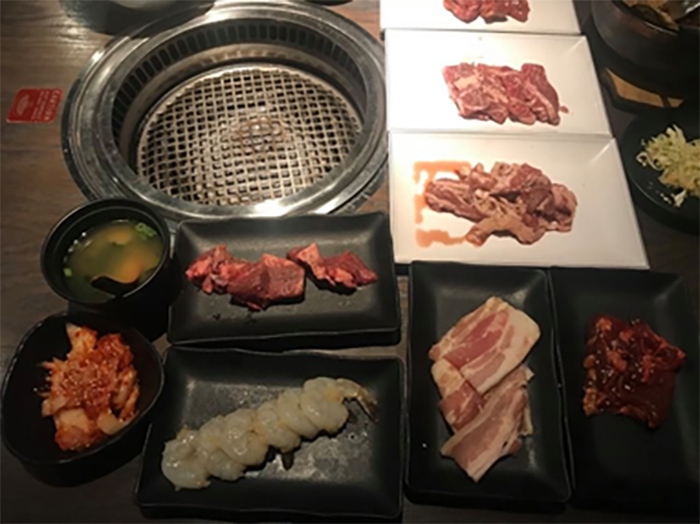 One of my favorite meals at restaurants are Japanese barbeques (JBBQs) and Korean barbeques (KBBQs). They showcase some incredibly complex flavors mixed with the charred taste of protein that makes the perfect combination for a hearty, satisfying meal. Recently Alberta opened in-person dining and I had an opportunity to celebrate my roommate’s birthday at a Japanese barbeque restaurant. While many JBBQs and KBBQs are all-you-can-eat, this particular one was not. I personally found that the a la carte options provided better cuts of protein, great variety, and were more enjoyable when you don’t over-eat because of the restricted portion sizes.
One of my favorite meals at restaurants are Japanese barbeques (JBBQs) and Korean barbeques (KBBQs). They showcase some incredibly complex flavors mixed with the charred taste of protein that makes the perfect combination for a hearty, satisfying meal. Recently Alberta opened in-person dining and I had an opportunity to celebrate my roommate’s birthday at a Japanese barbeque restaurant. While many JBBQs and KBBQs are all-you-can-eat, this particular one was not. I personally found that the a la carte options provided better cuts of protein, great variety, and were more enjoyable when you don’t over-eat because of the restricted portion sizes.
So what are the similarities and differences between these two highly popular dining options?
Similarities
- Both JBBQ and KBBQ allow guests to cook their food themselves. This adds a lot of fun and excitement to the eating experience. I found that these dining styles truly enable individuals to custom the degree to which the protein is grilled.
- Side dishes are often available for both and add some changes to the palate especially after having multiple cuts of the same meat dipped in the same sauce, the side dishes are a refreshing change.
Differences
- KBBQ typically has meat marinated in a variety of sauces adding a lot of flavor to the meat. Even after the meat is grilled, a variety of sauces can be added to the meat to enhance the flavor further.
- The grill used for KBBQ is a charcoal or gas grill.
- Oftentimes the meat is wrapped in veggies such as lettuce leaves.
- Typically, KBBQs offer unlimited sides, called banchan dishes, including things like potato salad, fishcakes, kimchi, and pickled vegetables.
- The cuts of meat include beef short ribs (kalbi), pork belly, boneless chicken, and brisket steaks
- JBBQ typically offers high quality cuts of meat that are not marinated to preserve the natural flavors of the protein. However, following the grilling, dipping sauces can be used to add flavor including mirin, garlic and soy sauce.
- The barbecue grill used is a charcoal or gas grill, however, Teppanyaki (which is another subcategory of JBBQ) uses a cast iron grill.
- Side dishes are often raw vegetables or salads.
- The cuts of meat often include beef, pork, and chicken. For beef, I’ve tried wagyu cuts and other marbled cuts of beef that almost melt on your tongue with their high fat content. Pork and chicken are often extremely tender and reminiscent of the yakitori or skewered meats in Japanese street-food.
Overall, both KBBQ and JBBQ are incredibly enjoyable experiences and can be DIY or experiences in a restaurant setting. Prior to the opening of local restaurants for in-person dining, I’ve attempted my own KBBQ at home using a backyard charcoal grill and laying the different cuts of meat marinated with a KBBQ marinade—which you can find in most Asian supermarkets.




